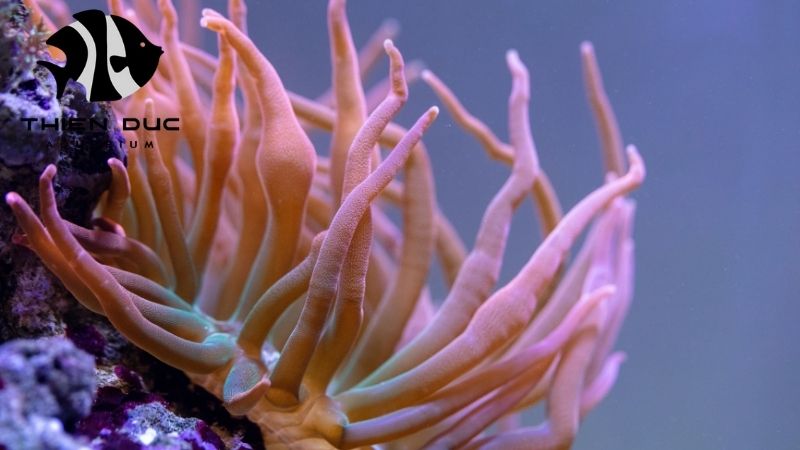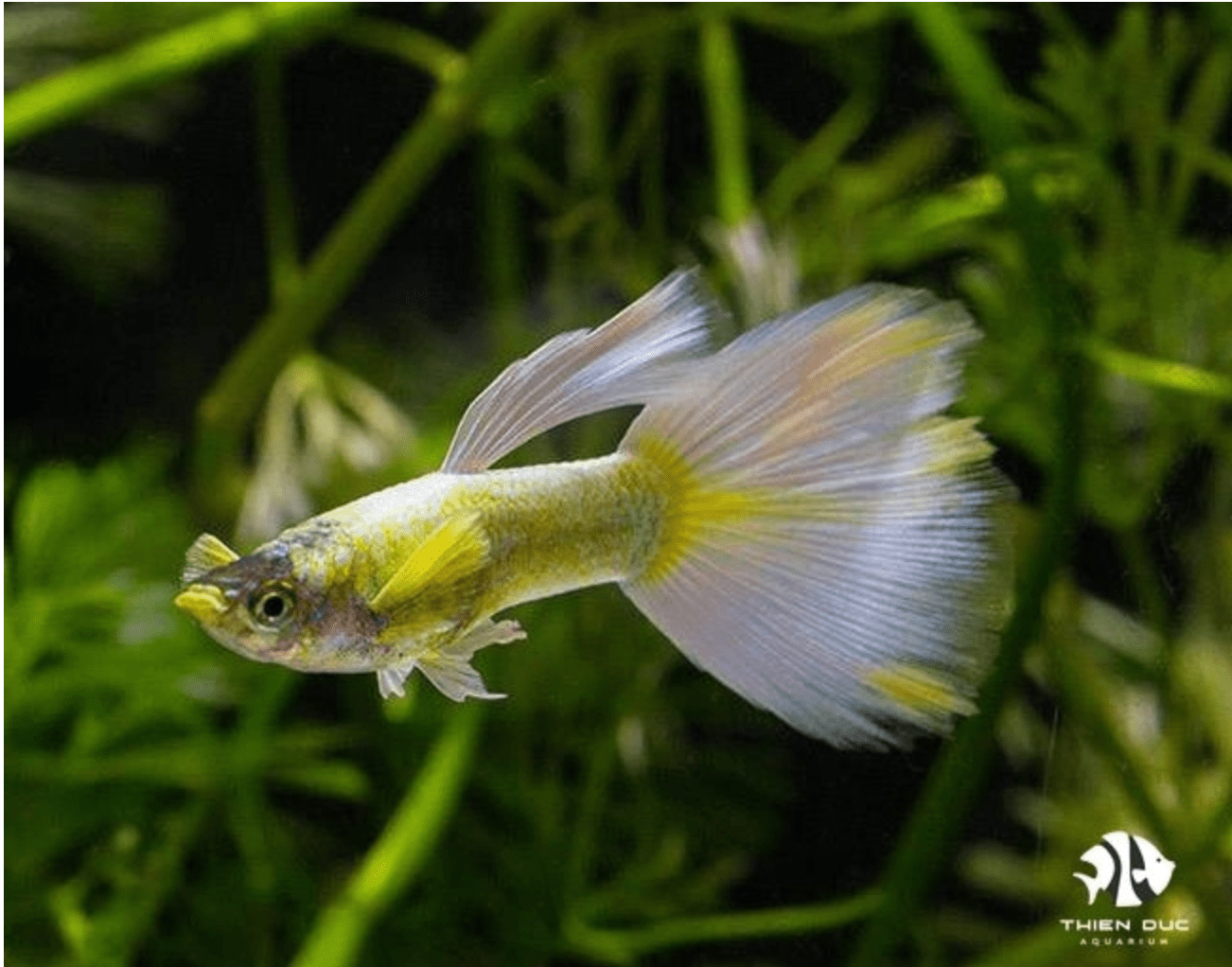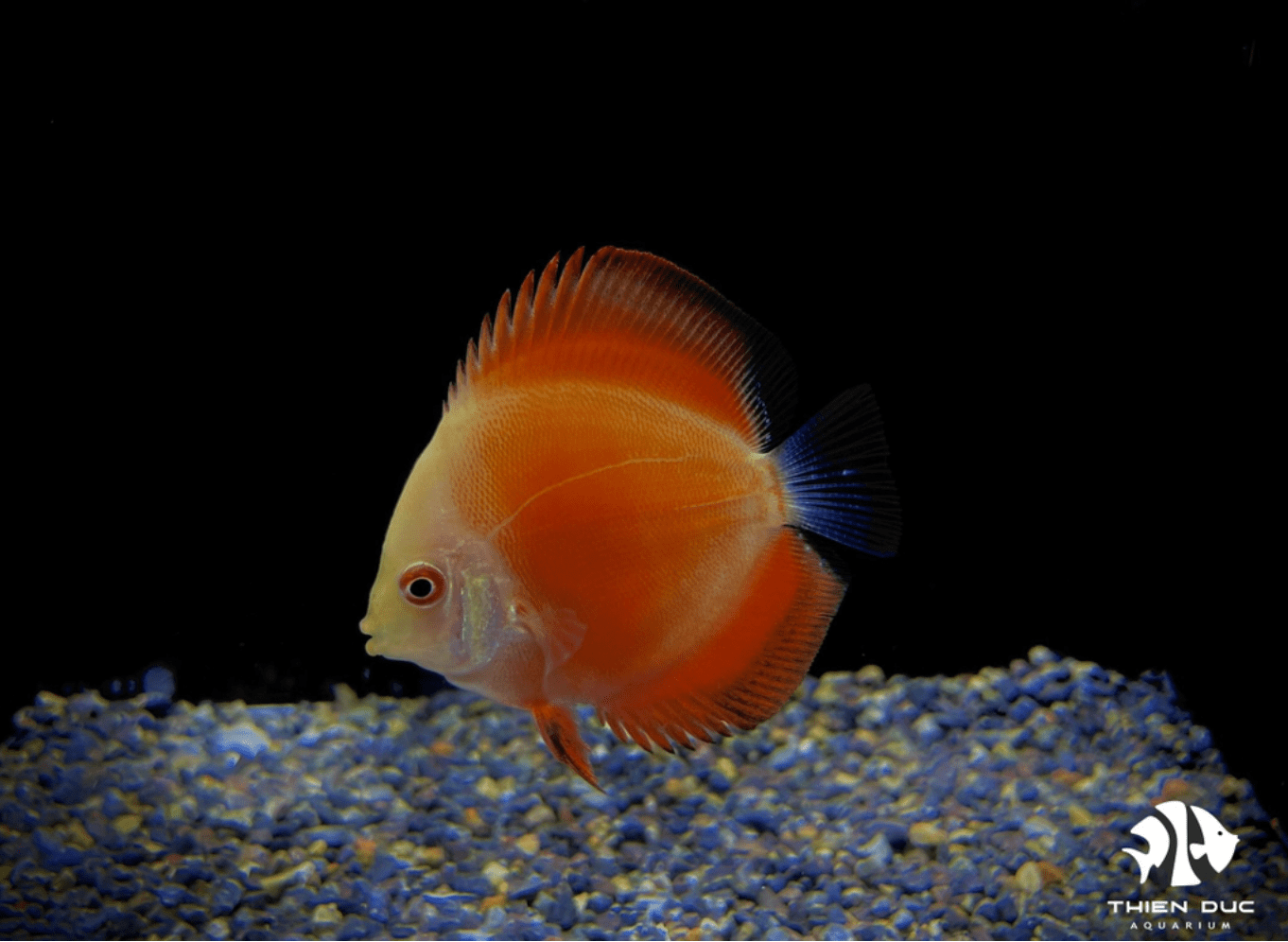Anemones for Reef Tanks: Choosing the Right Species
Anemones are captivating additions to a reef tank, bringing dynamic life through their symbiotic relationship with clownfish. But their particular requirements must be carefully taken into account. To help you choose the right species for a thriving tank, THIENDUC AQUARIUM, a provider of high-quality marine life, created this guide for Anemones for reef tanks.
Understanding Anemones and Their Role
Anemones are marine invertebrates belonging to the phylum Cnidaria, making them close relatives of corals and jellyfish. They are sessile predators, using their stinging tentacles to catch food, but many also derive a significant portion of their energy from a symbiotic relationship with zooxanthellae, the same photosynthetic algae found in corals.

The most famous aspect of anemones is their partnership with clownfish.
A clownfish, immune to the anemone's sting, finds safety and a home among its tentacles, while the anemone benefits from the clownfish's cleaning services and protection. This relationship is a highlight of any reef tank and is often the primary reason hobbyists consider adding an anemone. When selecting Anemones for reef tanks, this symbiotic potential is a huge draw.
However, anemones are not for the faint of heart. Unlike some hardier coral species, they are highly sensitive to changes in water parameters and are often the first inhabitants to show signs of instability. Their care requires a mature tank with stable conditions, excellent lighting, and a well-thought-out placement strategy. At THIENDUC AQUARIUM, we work with the best farms and suppliers to ensure every anemone is healthy and robust, but a successful transition relies on the aquarist’s preparation.
Key Factors for Choosing an Anemone
Choosing the right anemone species is about more than just aesthetics. It involves a detailed assessment of your tank’s capabilities and long-term viability. Here are the crucial factors you must consider before adding Anemones for reef tanks.
Lighting Requirements
Anemones are predominantly photosynthetic, and the quality and intensity of your lighting system are paramount. High-end lighting systems like metal halides or powerful LED arrays are often required. Without adequate light, an anemone will not be able to produce enough energy, leading to a slow decline in health. It is essential to research the specific light needs of the species you are considering. Furthermore, once you introduce an anemone, it is crucial to acclimate it slowly to your lighting, gradually increasing the intensity over several days or weeks to prevent light shock.
Tank Size and Space
Anemones are motile, meaning they can move around your tank. They will "walk" to find the best spot for lighting and water flow. Their sting can be potent and will harm or kill corals and other sessile invertebrates. Therefore, it is critical to provide ample space, both for the anemone to settle and for other tank inhabitants to avoid contact. A large, well-aquascaped tank is essential to prevent conflict, especially for aggressive species. As a supplier of high-quality marine fish since 2012, THIENDUC AQUARIUM understands the importance of a harmonious tank environment, and we only recommend Anemones for reef tanks that can be properly housed.

Water Parameters
Stability is the single most important factor for anemone health. They require consistent salinity (1.025−1.026 S.G.), stable pH, and a temperature of approximately 25−26∘C (77−79∘F). Elevated nitrates and phosphates can be detrimental. A mature tank with a well-established biological filter is a non-negotiable prerequisite. A new or unstable tank will almost certainly spell disaster for an anemone.
Water Flow
Anemones need moderate, turbulent water flow to deliver food and remove waste, but they do not like direct, powerful current. Inadequate flow can cause them to deflate and "walk" around the tank in search of a better location, putting other corals at risk. A good rule of thumb is to have a flow that gently sways their tentacles without pushing the body around.
Popular Anemone Species for Reef Tanks (and who they're for)
At THIENDUC AQUARIUM, we believe in providing our customers with the knowledge to select the perfect addition to their collection. Here’s a breakdown of some of the most popular species and their suitability for different aquarist levels.
The Right Choice for Beginners (with adequate tank conditions)
Bubble Tip Anemone (Entacmaea quadricolor): Often considered the best choice for first-time anemone keepers, the Bubble Tip Anemone is widely available and relatively hardy. Its iconic bubble-shaped tips make it a visually appealing host for many clownfish species, including the popular Ocellaris and Percula. Bubble Tips can thrive under strong LED lighting, making them a popular choice for many modern reef tanks. Their resilience and ability to host clownfish make them an excellent gateway into the world of Anemones for reef tanks.

Intermediate-Level Choices
Long Tentacle Anemone (Macrodactyla doreensis): As the name suggests, this anemone is known for its beautiful, long tentacles. It's a burrowing species, meaning it prefers to anchor its foot deep within a sand bed, with its oral disc and tentacles exposed. This requires a tank with a sufficiently deep substrate. While stunning, they can be sensitive to handling and shipping, making them a step up in terms of care. They are a good choice for those who have a successful reef tank and want to add a unique aesthetic element.
Magnificent Anemone (Heteractis magnifica): The Magnificent Anemone is an iconic species, famous for its grand size and status as a preferred host for the most common clownfish species. However, it's a demanding animal. It requires a very large tank to accommodate its size, powerful lighting, and pristine water quality. It is highly sensitive to any fluctuations, and once settled, it should not be moved. For experienced aquarists seeking a centerpiece for a dedicated display tank, few species compare in grandeur. When considering Anemones for reef tanks, this one is the gold standard for many enthusiasts.
Advanced-Level Choices
Carpet Anemone (Stichodactyla haddoni, S. gigantea): Carpet Anemones are among the most beautiful but also the most challenging and dangerous species to keep in a mixed reef tank. Their powerful sting can kill fish and corals, and they have a notoriously aggressive appetite. They are not recommended for community tanks and are best kept in a species-specific environment. Their care requires an experienced hand, as they are not forgiving of mistakes. For those dedicated to creating a truly specialised display, a healthy Carpet Anemone can be a magnificent sight. THIENDUC AQUARIUM sources only the healthiest specimens, ensuring they are ready for their new home, but we strongly advise only advanced aquarists to consider these demanding Anemones for reef tanks.
The Anemone Acclimation Process
Introducing a new anemone to your tank is a delicate process. It should be handled with extreme care to minimise stress. The goal is to provide a gentle transition from our facilities to your aquarium.
-
Preparation: Turn off all pumps and powerheads to reduce water movement. Dim the lights.
-
Acclimation: Place the anemone in a container with a small amount of its transport water. Slowly drip-acclimate it to your tank's water over an hour.
-
Introduction: Gently place the anemone in your tank, allowing it to attach its foot to a rock. Do not force it or move it once it has settled.
-
Observation: Monitor the anemone closely over the next few days. It may take some time to fully inflate and settle. This patience is key to a successful addition of Anemones for reef tanks.
Conclusion
Adding Anemones for reef tanks is a rewarding commitment that requires thorough research into lighting, tank size, water stability, and species-specific care. At THIENDUC AQUARIUM, our expertise and high-quality specimens give you the best chance for success. We are passionate about helping you create a flourishing reef ecosystem and are here to help you choose wisely, ensuring your anemone brings endless joy to your tank.
Contact Information:
-
Address: 57 Le Thi Sieng, Tan Thong Hoi, Cu Chi, Ho Chi Minh City, Viet Nam
-
Mobile: +84903912501
-
Office: +84982577871
-
Email: thien@thienducaquarium.com










